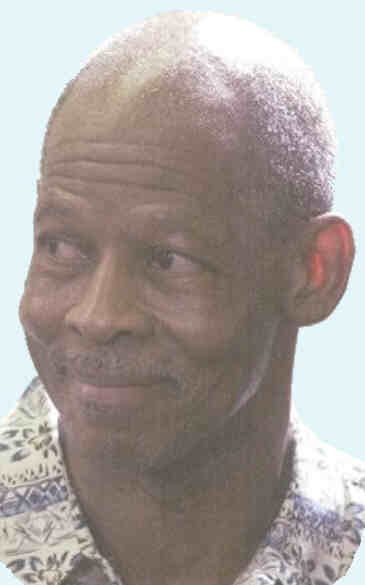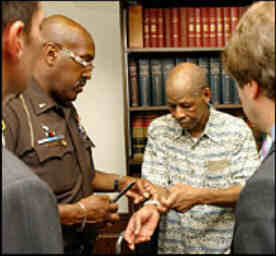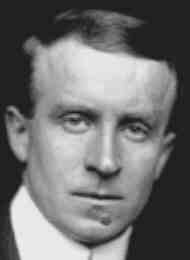2002 Gateway (GTW) introduces its new all-in-one Profile 4 computer, resembling the floating, flat-screen IMac of Apple (AAPL), with either a 15- or 17-inch flat-screen monitor connected to the computer's keyboard. Like the IMac, the Profile 4 offers various disk-drive options including CD-ROM, DVD-ROM, CD-RW, and combination a CD-RW/DVD-ROM drive. Unlike the IMac, the Profile 4 runs on either Pentium 4 or Celeron high-speed processors, both produced by Intel (INTC). It also includes graphics delivered via chips made by Nvidia (NVDA). An entry-level Profile 4 will cost $999 compared to the $1299 starting point for the IMac.
 2002
Free at last, thanks to DNA 2002
Free at last, thanks to DNA After 17 years in prison, Eddie Joe Lloyd [photo >] is freed. He had been found guilty of raping and murdering Michelle Jackson, 16, on 24 January 1984, in Detroit. He had confessed but recent DNA tests showed that he couldn't have been the killer. Lloyd was a patient at the Detroit Psychiatric Institute and on medication when police said that he confessed on audiotape. DNA tests just completed show Lloyd didn't commit the crime, and Detroit police and prosecutors joined in calling on Wayne County Circuit Court Judge Leonard Townsend to release Lloyd from prison. The case has bolstered calls for a probe into Detroit police methods. While throwing out the conviction, Townsend, who was the original trial judge, put part of the blame on Lloyd. “Even though he may have lied about what he did, the fault falls on him,”' Townsend said. “I never heard this gentleman say, `I didn't do it.’” Lloyd becomes the 110th convicted person in the United States and the first in Michigan to be exonerated by DNA testing, according to the Innocence Project, which seeks to use DNA evidence to help innocent prisoners. DNA testing techniques were not available to help defendants until the last decade or so. The DNA break could lead to even more scrutiny of the Detroit Police Department, which has been the target of an investigation by the US Justice Department since 2000 for fatal shootings by officers, claims of prisoner mistreatment and other alleged misconduct. Barry Scheck, an attorney with the Innocence Project, and Saul Green, former U.S. attorney for the Eastern District of Michigan, will ask federal officials to investigate Detroit police in the Lloyd case. Lloyd was sentenced to life in prison in the rape and murder of Jackson after his purported confession. Lloyd had contacted police after overhearing details about the case at a convenience store. Detroit Police Inspector William Rice, who was present when Lloyd “confessed”, said the department agreed that the conviction should be thrown out. But he said that at the time, the confession Lloyd gave was compelling. But Scheck said it wasn't really a confession. He said police got it by telling Lloyd that he could help “smoke out” the real perpetrator and provided him with details of the crime that he couldn't have known.  Wayne County Prosecutor Michael Duggan said his office doesn't
believe there was willful wrongdoing by police. The DNA evidence
in Jackson's slaying was gathered from a bottle and the long
johns used to strangle the girl, found at the crime scene, as
well as from vaginal slides discovered three weeks ago. The
DNA doesn't match any samples in the FBI's database, meaning
Lloyd couldn't have committed the crime. The case illustrates
the need for recording interrogations, and for using special
caution when questioning people who are mentally ill or mentally
retarded.
Wayne County Prosecutor Michael Duggan said his office doesn't
believe there was willful wrongdoing by police. The DNA evidence
in Jackson's slaying was gathered from a bottle and the long
johns used to strangle the girl, found at the crime scene, as
well as from vaginal slides discovered three weeks ago. The
DNA doesn't match any samples in the FBI's database, meaning
Lloyd couldn't have committed the crime. The case illustrates
the need for recording interrogations, and for using special
caution when questioning people who are mentally ill or mentally
retarded. If Michigan had the death penalty, Lloyd would have been sentenced to death, for the judge lamented that the court could not impose the death penalty. The Innocence Project has been working on the Lloyd case for seven years. Other recent cases the project has handled include that of a St. Louis man who spent nearly 18 years behind bars for rape. A Michigan law that went into effect in 2001 allows inmates to ask the court for DNA testing and a new trial if they can show the tests might prove their innocence. [< photo: prisoner identification bracelet is removed from Lloyd's wrist] |
| 1998 US export restrictions on encryption challenged. A federal judge rules that export regulations on encryption technology are unconstitutional. The judge affirms an earlier ruling she had made, prohibiting the government from prosecuting a mathematics professor at the University of Illinois. The battle over encryption export restrictions, however, would wage on, as the government would appeal the decision. |
| 1994 Fugitive financier brought
to justice (or 1996?) One of America's most notorious fugitives, financier Robert Vesco, finally landed in jail on a thirteen-year sentence for "economic crimes against the state." The Detroit native was found guilty of defrauding Cuba's state-run pharmaceutical agency during the development of TX, a plant-based "wonder drug" that was reputed to help prevent AIDS and cancer. It wasn't the first time that Vesco had run afoul of the law: in the early 1970s he was charged with making illegal contributions to Richard Nixon's reelection campaign. The government indicted the financier, but rather than serve time, he fled to Latin America. Vesco was also charged with trying to swindle mutual fund investors out of $224 million. |
1991 In an address to the Supreme Soviet, President Mikhail S. Gorbachev promised national elections in a last-ditch effort to preserve his government, but leaders of Soviet republics told him the hour of central power had passed.
 1906
Christopher Isherwood, English novelist and playwright, author of
Goodbye to Berlin, the inspiration for the play I am a Camera and the
musical and film Cabaret.
1906
Christopher Isherwood, English novelist and playwright, author of
Goodbye to Berlin, the inspiration for the play I am a Camera and the
musical and film Cabaret.